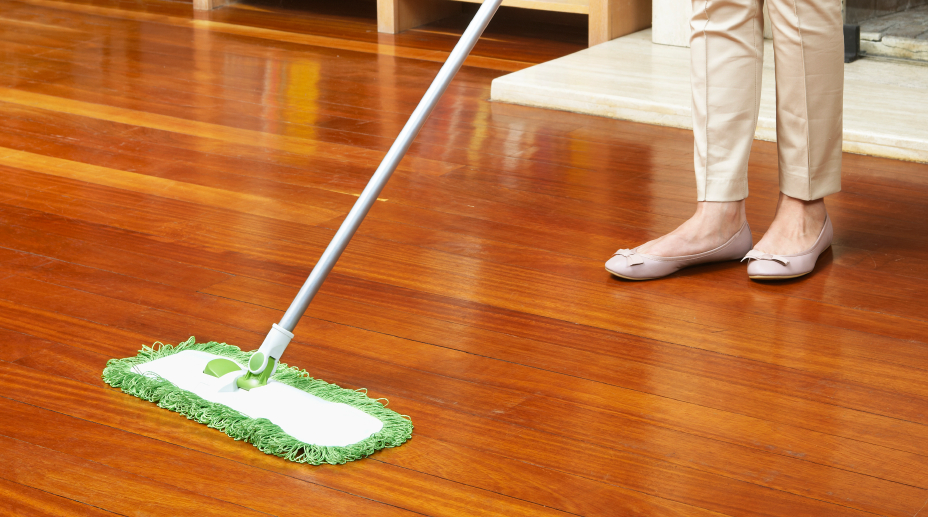Wood flooring is a popular choice for homeowners due to its natural beauty, durability, and timeless appeal. However, it’s essential to understand that wood is a natural material that requires proper care and maintenance to retain its luster and longevity. Different species of wood have unique characteristics and properties, so it’s important to familiarize yourself with the specific care requirements of your flooring material.

Implementing Regular Cleaning Routines
Regular cleaning is essential for preserving the beauty and integrity of wood floors. Dust, dirt, and debris can accumulate over time, causing scratches and dulling the finish. To prevent damage, sweep or vacuum your floors regularly using a soft-bristle broom or a vacuum with a hardwood floor attachment. Avoid using abrasive cleaning tools or harsh chemicals, as these can scratch or damage the wood surface.
Using Gentle Cleaning Solutions
When mopping wood floors, use a mild cleaning solution specifically formulated for hardwood surfaces. Avoid using excessive water, as standing moisture can penetrate the wood and cause warping or swelling. Instead, dampen a soft microfiber mop with the cleaning solution and gently mop the floors in the direction of the wood grain. Dry the floors thoroughly with a clean, dry cloth to prevent water damage.
Protecting Against Moisture and Spills
Wood floors are susceptible to moisture damage, so it’s essential to take precautions to protect them from spills and excess humidity. Place moisture-resistant mats or rugs in high-traffic areas such as entryways, kitchens, and bathrooms to absorb moisture and prevent water damage. Promptly wipe up spills and accidents using a soft, absorbent cloth to prevent staining and water penetration.
Preventing Scratches and Scuffs
To prevent scratches and scuffs on wood floors, take proactive measures to protect them from furniture, pet claws, and high heels. Place felt pads or furniture glides under heavy furniture legs to prevent them from scratching the wood surface. Trim pets’ nails regularly to minimize the risk of scratches, and avoid walking on wood floors with sharp or pointed footwear. Consider using area rugs or runners in high-traffic areas to provide an extra layer of protection.
Maintaining a Consistent Indoor Environment
Wood flooring is sensitive to changes in temperature and humidity, so it’s essential to maintain a consistent indoor environment to prevent warping, shrinking, or swelling. Keep indoor humidity levels between 30% and 50% year-round using a humidifier or dehumidifier as needed. Avoid exposing wood floors to extreme temperature fluctuations or direct sunlight, as these can cause wood to expand or contract, leading to structural damage over time.
Refinishing and Repairing as Needed
Over time, wood floors may show signs of wear and tear, such as scratches, dents, or surface damage. When damage occurs, it’s essential to address it promptly to prevent further deterioration. Depending on the extent of the damage, you may be able to repair minor scratches and dents using wood filler or touch-up kits. For more extensive damage or wear, consider refinishing your floors to restore their appearance and protect them from future damage.
Protecting Against UV Damage
Exposure to ultraviolet (UV) radiation from sunlight can cause wood floors to fade, discolor, or become brittle over time. To protect against UV damage, consider installing UV-blocking window treatments or applying a protective coating to your windows to filter out harmful UV rays. Additionally, rearrange furniture and rugs periodically to minimize prolonged exposure to direct sunlight and prevent uneven fading or discoloration.
Consulting with Flooring Professionals
If you’re unsure about how to care for your wood floors or if you encounter significant damage or deterioration, don’t hesitate to consult with flooring professionals for guidance and assistance. They can provide expert advice on proper maintenance techniques, recommend suitable cleaning products, and perform repairs or refinishing as needed to restore the beauty and integrity of your wood floors.
Conclusion
In conclusion, caring for wood floors requires diligence, attention to detail, and an understanding of the unique characteristics of wood as a natural material. By implementing regular cleaning routines, using gentle cleaning solutions, protecting against moisture and spills, preventing scratches and scuffs, maintaining a consistent indoor environment, refinishing and repairing as needed, protecting against UV damage, and consulting with flooring professionals when necessary, homeowners can ensure that their wood floors remain beautiful, durable, and long-lasting for years to come. With proper care and maintenance, wood floors can continue to enhance the beauty and value of your home for generations to come.